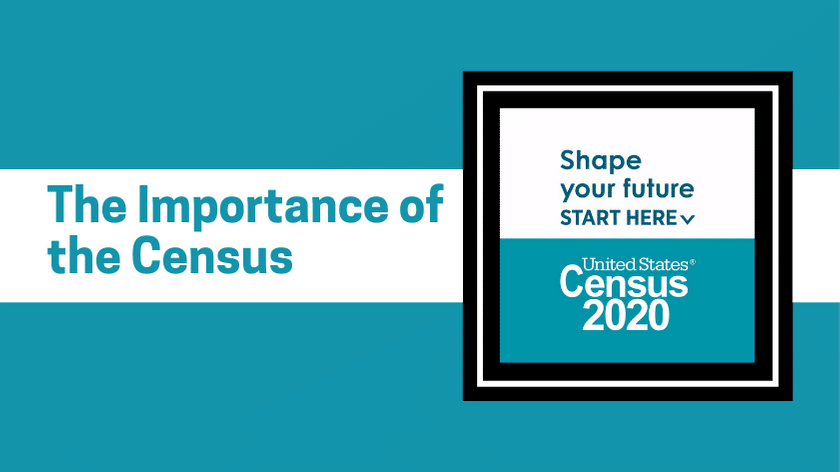Written by: Nancy Massey, Indiana Room Coordinator
As soon as I received my invitation to participate in the 2020 census, I was online answering the questions. Why did I respond so quickly? Well, I legally have to respond! Secondly, I am a genealogist; I love researching census records for my ancestors, and completing my census is a way to pay it forward to future genealogists. Plus, it’s important!
You may be wondering why you should respond to your 2020 census invitation. First, it is your legal responsibility. Second, this is how the number of seats in Congress and the flow of federal funding for our state will be determined. The data from this census will affect your community and state for the next ten years. Don’t be nervous; your answers are not for public viewing…yet. In 72 years, the 2020 census will be open for public viewing, and the answers you provided should be accessible by your descendants.
 This 72 years of privacy applies to all census records. Genealogists have been accessing census records from the first one in 1790 through the 1940 census, which was the last one opened to public viewing. (Just so you know, census records were never intended for genealogy research.) In 2022, on April 1, the 1950 census will be accessible. Personally, I am looking forward to it so I can see the records my mother recorded as a 1950 census taker. My burning desire is to see if her handwriting is legible! Anyone who has researched census records knows how illegible the writing can be and how family names can be spelled (and misspelled) a myriad of ways.
This 72 years of privacy applies to all census records. Genealogists have been accessing census records from the first one in 1790 through the 1940 census, which was the last one opened to public viewing. (Just so you know, census records were never intended for genealogy research.) In 2022, on April 1, the 1950 census will be accessible. Personally, I am looking forward to it so I can see the records my mother recorded as a 1950 census taker. My burning desire is to see if her handwriting is legible! Anyone who has researched census records knows how illegible the writing can be and how family names can be spelled (and misspelled) a myriad of ways.
Knowing the background of each census record year helps in research. For example, in the years 1790–1840, only the head of household was recorded. Everyone else was more or less a count. Beginning in 1850, everyone in the household was recorded on the census. A word of caution though: the relationship to the household head was not listed—so those children may actually be grandchildren, nieces, or nephews. Be careful not to make assumptions!
Skipping ahead to 1880, the relationship to the household head was listed. Now you know if the child was a son, daughter, niece, nephew, in-law, etc. The 1890 census had one full page dedicated to one family, lots of questions with lots of information. Unfortunately, in 1921, the 1890 census was burned in a fire in the Washington, DC, building where it was stored. Only a few records survived and are accessible today.
My favorite census year is the 1900 census. It is the only accessible census with a birth month and birth year as well as age. The 1900 census also records the number of years married and, for women, the number of pregnancies and surviving children. This is awesome information for a genealogist!
Skipping to the last census available for public viewing, the 1940 census, I found my mother with her parents and siblings! This is the only census showing the whole family unit together in a household since my uncle—my mother’s younger brother—died in World War II.
I will share a recording secret with you…look for an x inside a circle beside a name in each household. This indicates the person giving the answers to the census taker. It will help in your research to know who exactly is answering the questions. Maybe this year that person is you!
Want to research some census records? Well, if you have a HEPL card, there are two databases you can access to do just that. The Heritage Quest Online database has every census record 1790–1940 in addition to mortality schedules, agricultural schedules, slave schedules, and some state census records. It is accessible from home with your HEPL card and PIN.
For a short time, Ancestry Library Edition is also accessible from home (usually you must visit the library to gain access). Don’t wait! This rare wonderful opportunity ends soon!
About that 2020 census—it’s not too late! You may have thought you missed the deadline because April 1stwas Census Day. Census Day isn’t a deadline; it’s the date that determines who gets counted where. You can answer before or after April 1st, and I encourage you to take time to answer the questions today! You may do this online (as I did), by phone, or by mail. Don’t make a census taker knock on your door! And if you already have answered the 2020 census, thank you!
You can learn more about the 2020 Census at 2020Census.gov.

